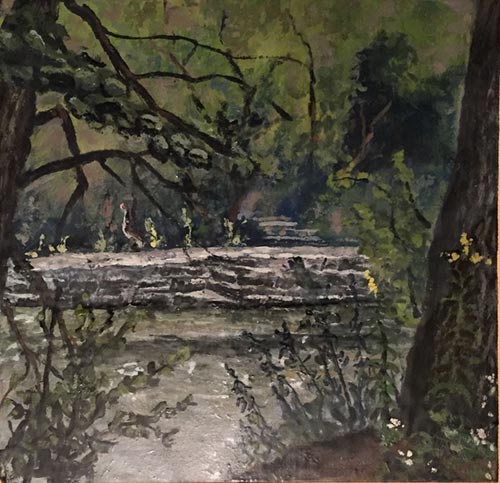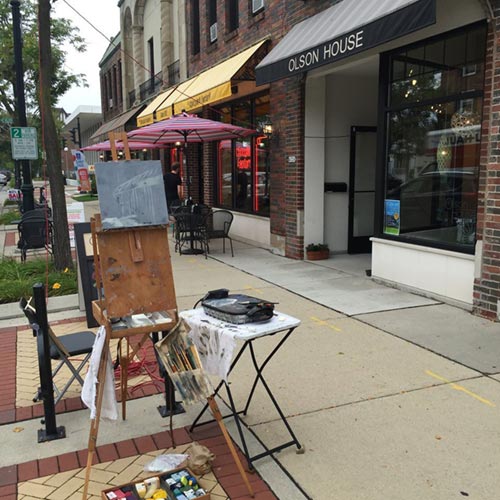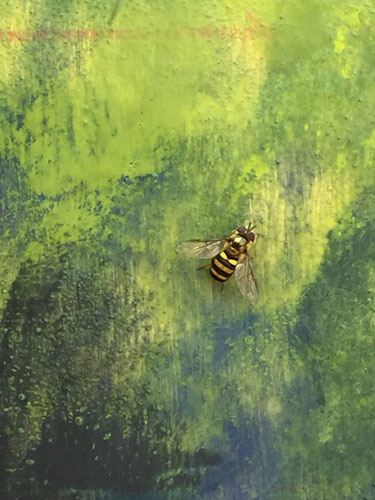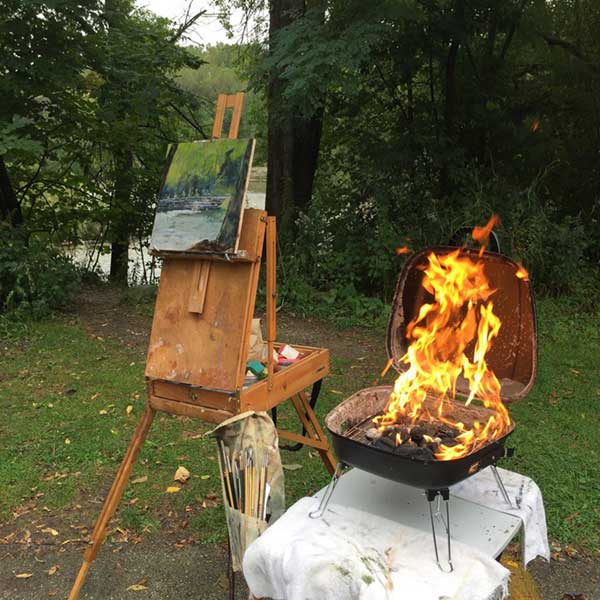“Plein air” and “encaustics” are generally not found in the same sentence … unless Michael Westcott is talking.
Lead Image: All you need to paint with encaustics en plein air is a small grill, Michael Westcott found.
Encaustic painting is done with beeswax that’s impregnated with pigment. It requires that the wax be melted so the paint may be applied. That usually implies an electric hotplate or a similar device, plugged into an outlet in the studio. But Westcott, who is primarily an encaustics painter, needed just a small shift in his thinking to move his setup outdoors and employ encaustics en plein air. “Encaustic painting goes back to antiquity,” says Westcott. “I thought, if they could do it without electricity 2,000 years ago, then I can do it.”

Indoors, Westcott uses kitchen gadgets and appliances. “All of my appliances for encaustic painting are made for cooking,” says the Milwaukee artist. “If I buy things from Williams-Sonoma instead of from an art-materials store, it’s much cheaper.”
Outdoors, the painter utilizes charcoal. He uses an air-bake pan as a palette on top of a small tailgating grill. Or he did, at least. “The grill was stolen out of my truck when I got home from Plein Air Shorewood,” says Westcott. “I guess somebody needed it.” He uses a butane torch — from Williams-Sonoma — to fuse the layers of paint together. Getting the coals to the proper temperature — hot enough to melt the wax, not too hot so as to burn it or make the paint too runny — was the hardest part. He started with six briquettes, but they wouldn’t burn well. After adding six more, he found that the combined coals emanated the right amount of heat. “I ended up with a nice perpetual fire; I just kept adding six more briquettes when it started to cool. The encaustics medium turns opaque when cooled, so if it wasn’t transparent or at least translucent, I knew I needed to add more coals.”

Wind was a challenge, and so was the setup time. “It takes 30 to 90 minutes to get everything ready, but I can frame the composition while I’m waiting for the fire,” Westcott says. “Also, I have to heat the design with the torch to fuse the layers, so I had to make sure the wind was coming from behind the torch or it would go out.”

Why bother? Encaustic’s jewel-like tones are one reason. Another is the medium’s ability to stand out from pieces made with more traditional plein air paints. And for Westcott, it’s his love. “I enjoy encaustics because it is always wet, and it’s always dry. You can go back into a painting five years later, and then turn the heat off, and it’s dry again. It’s not as expedient as painting with other media in terms of setup, but when you finish, you can just throw it in the back of the truck and go.”





I paint in oils and watercolors plein air. I am also a batik artist and you have made me think it would be possible to do batiks plein air as well. Any advice would be appreciated.